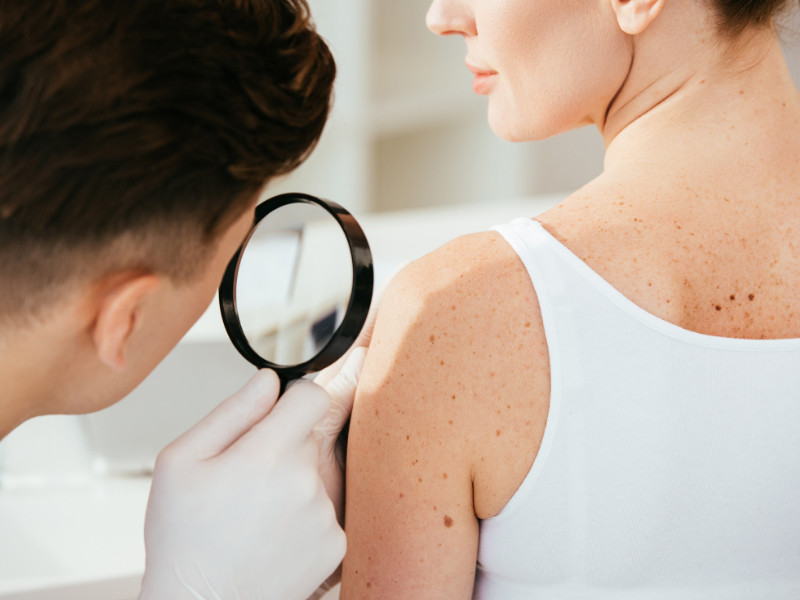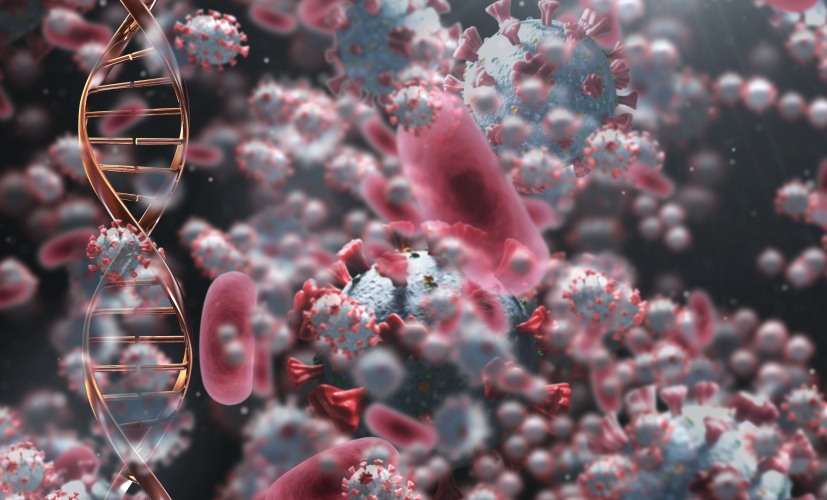
We are certain that sun protection is an inseparable part of the daily cosmetics every lady uses. We all are aware just how important it is to protect yourself from the sun, even in the spring and especially if nature has given us a lighter skin and body moles. Ultraviolet light is not to be underestimated and it is no coincidence dermatologists have determined May to be the month for basic skin care. Exactly now, on the verge of summer, should you consider visiting a specialist to get your moles checked.
Nevus – the other term for moles
This term is used by specialists to describe born or acquired skin “anomalies’’ as a result of tissue growth. It is important to know all such formations are benign and are caused by an uneven distribution of skin melanocytes – the cells, in which melanin is produced. This is the reason body moles possess a darker colour, while some are even visible atop the skin’s surface.
All people have nevi of different shapes and sizes, their quantity is determined by means of inheritance and they are not considered to be a risk factor. Interestingly, the first moles appear in the early years of a child’s life, but some of them disappear later on. These small, pigmented spots are most often formed on the face and upper torso area, rarely on the limbs and sometimes can even be found in the hairy parts of the body.
Not every mole is a cancer formation
Actually, just 1-3% of known skin formations fall into the category carcinoma. This is too low a rate to be constantly frightened by moles, but is simultaneously a high enough rate to warrant carefulness.
Skin cancer is formed when certain cells begin to divide themselves uncontrollably. These are usually cells with damaged DNA, which are activated and continue to grow to a carcinoma under the influence of various triggering factors (most often UV light). Usually, the change starts on the skin surface and is visible to the naked eye. This aids specialists in recognizing skin cancer symptoms early on and in taking the appropriate measures to counteract their development.
The skin remembers every burn
Specialists like to say the skin is an unforgiving organ. A big part of health problems we experience in adult life are actually directly linked to our childhoods. Cells remember every burn and if the early years of our lives have often been characterized by strong redness, because our parents did not protect us from the sun, this leads to a higher probability of cancer formations and skin allergies in adulthood. As a result, sunscreen nowadays is not only a useful product, but an absolutely necessary part in the prophylaxis against future skin problems.
For example, a strong skin burn during childhood years is one of the most serious risk factors for the appearance of a melanoma in adult years (melanoma being the most malignant tumour known in the human body). A melanoma is a rarity before the age of 18, but the risk grows steadily with progressing time. According to the latest studies, skin cancer cases have grown by 50% over the last 10 years, which is mainly attributed to a more advanced diagnosis, but is also a result of climate change and the even stronger UV light rays.
When do moles constitute a problem?
The main criteria for determination are their appearance and size. Moles with an unusual shape, different colours and those having become larger over the weeks or months prior to the examination are a clear warning sign for the patient. Of course, one can hardly diagnose themselves, therefore it is strongly advised to consult a specialist, even when harbouring a small suspicion.
To determine the degree of danger, patients are subjected to a dermoscopy with a special device – something between a magnifier and a microscope, which helps doctors recognize problematic skin. Afterwards, if the mole is benign, the patient can have it removed. This becomes especially necessary, if it is located near straps or rubber bands, which often harm the mole and cause bleeding. Removing it is the best prevention against future infections and insures a greater comfort for the patient.
In case the dermatologists harbour any kind of suspicion, the mole is necessarily removed. If it turns out be a melanoma, the mole is histologically examined to determine its stage of development, as this becomes highly relevant for future therapy.
Stick to the general guidelines for sun protection
Regardless of the mole sizes, specialists advise to reduce direct sun exposure to a minimum. This includes not only staying in the shadows, but also every imaginable kind of possible sun protection – umbrellas, t-shirts, clothing with UV-filter, sunglasses, hats etc.
Furthermore, specialists recommend always using sunscreen in the hot months of the year, as it protects not just our skin from the unhealthy UV radiation, but moles as well. This is especially important for children and adults with lighter skin, due to their higher susceptibility towards pigmentation.
Choose your cosmetics carefully, more often than not are UV cremes responsible for the formation of contact dermatitis. If you have a bad history with a lotion, which has provoked a rash, use products with mineral photoprotection. These are usually cremes and lotions for people with sensitive skin. To avoid the improper product, specialists advise to shop for sunscreen at your local pharmacy instead of the supermarket.
Even despite all of this, the sun is not a foe and we shouldn’t be afraid of it. A good-looking body also requires its fair share of UV sun rays, as they are directly responsible for synthesising vitamin D. To accomplish this however, you don’t need to spend the whole day on the beach. Fully sufficient are 10-15m daily, in order for our bodies to receive the dosage it requires without being burned.
To prevent ruining your summer vacation with urgent dermatologist consultations, specialists advise avoiding the hottest hours during the day, namely between 11 and 16 o’clock. Wear lighter clothes that reflect light and learn to prefer the blissful shadows over the heat and sultriness of the beach.





